#panasonic DMC-LX10
Explore tagged Tumblr posts
Text


Saturday Morning Walk with Lucy... around Willow Lake. I also decided to put my backup compact camera through it's paces and leave my Canon 90D behind. I wanted to travel light - and I can't be without a camera ...phone doesn't count ;) So, the tradeoff was several pounds of Canon with superior imaging and two or three of my lenses, also each substantially weighing more than my Panasonic DMC-LX10 with a 24-72 zoom at around 7/10 lb. The lens is a Leica that trades off amount/length of zoom for a fast f1.4 light gathering feature. There are several more photos from this morning to follow. I captured these in RAW format and put them through some digital 'dodging & burning' with Lightroom. Overall, I'm quite happy with the results - and I hope you enjoy the photos as much as Lucy and I enjoyed our walk.
26 notes
·
View notes
Link

Panasonic’s Lumix DMC-LX10 Digital Camera offers outstanding performance through the use of a 20.1MP High Sensitivity MOS Sensor that can deliver sharp stills, UHD 4K videos, and more. This optic features a 35mm equivalent wide-angle to a telephoto range of 24-72mm, making it useful in a range of different situations. Also, the 20.1MP sensor furthers the camera’s abilities with an extended sensitivity range up to ISO 25600 and continuous shooting at up to 50 fps with an electronic shutter and 10 fps with the mechanical shutter. Hybrid shooters will appreciate the inclusion of high-quality UHD 4K video recording in the LX10. It can record at 30 or 24 fps at 100 Mbps using the MP4 format. Also, Panasonic leverages the power of this technology to provide advanced 4K PHOTO and 4K Post Focus features. Shooters who are always on the go can charge up their camera through the USB port. The camera is also boosted by the inclusion of numerous other features, such as focus stacking and Wi-Fi connectivity, making this a very capable imaging tool. The two technologies also contribute to a marked reduction in noise through the use of Multi Process NR, Random Filter, and Aperture Filter systems to realize consistent color fidelity and image clarity. The two technologies also contribute to a marked reduction in noise through the use of Multi Process NR, Random Filter, and Aperture Filter systems to realize consistent color fidelity and image clarity. In order to capture sharp, detailed images in a vast variety of shooting conditions, the LX10 is equipped with a Leica DC Vario-Summilux lens that has a versatile wide-angle to telephoto 24-72mm equivalent zoom range. This lens features an 11 element in 9 group design that incorporates 4 aspherical lenses with dual-sided aspherical surfaces, two aspherical ED lenses, and one UHR lens to minimize aberrations and maximize performance.4K Burst: Just as with video recording, this mode will allow you to continuously record 8MP images at 30 fps for up to 15 minutes, making it ideal for instances where you need a fast frame rate in order to capture the best moment. This function records imagery as a 4K MP4 file at 30 fps and shifts the specific point of focus throughout the burst shooting in order to offer a range of distinct focusing ranges to choose from. During playback, via the camera’s touchscreen, you can then tap the specific region of the image you wish to be in focus and an 8MP JPEG file will be created. It corrects for five types of camera shake that commonly affect more dynamic movement types that occur while moving when recording. A mechanical shutter enables a maximum shutter speed of 1/4000 sec and an electronic shutter function avails a top shutter speed of 1/16000 sec to better enable working in bright conditions and with wider aperture settings. Creative Control modes: Expressive, Retro, Old Days, High Key, Low Key, Sepia, Monochrome, Dynamic Monochrome, Rough Monochrome, Silky Monochrome, Impressive Art, High Dynamic, Cross Process, Toy Effect, Toy Pop, Bleach Bypass, Miniature Effect, Soft Focus, Fantasy, Star Filter, One Point Color, and Sunshine.
#Panasonic’s Lumix DMC-LX10 Digital Camera#Digital Camera#Panasonic’s Lumix DMC-LX10#Panasonic’s Lumix#canada#Panasonic
0 notes
Photo

Panasonic DMC-LX10 4K類單眼相機
F1.4-F2.8 超大光圈 3CM超近距離拍攝 4K超高畫質錄影 金屬外殼堅固耐用 直覺式轉盤設計
詳看內容
Panasonic松下 相機類型類單眼相機(PASM功能) 影像感應器1吋高感光度CMOS (背面照射式) 有效像素2001萬~3000萬像素 螢幕尺寸3.0吋以上 螢幕類型後掀式螢幕 觀景窗型式無 光學變焦3~7倍變焦鏡頭 儲存媒介SD, SDHC, SDXC 電源鋰電池 相機尺寸 (寬 x 高 x 深) (mm)105.5x60x42mm 含電池+記憶卡重量(g)約280g 保固期限12個月
Panasonic DMC-LX10 4K類單眼相機
數位相機,相機,手機/相機/耳機/穿戴,Panasonic DMC-LX10 4K類單眼相機 (平輸中文),Yahoo奇摩購物中心
0 notes
Photo

Panasonic DMC-LX10 4K類單眼相機 F1.4-F2.8 超大光圈 3CM超近距離拍攝 4K超高畫質錄影 金屬外殼堅固耐用 直覺式轉盤設計
詳看內容
Panasonic松下 相機類型類單眼相機(PASM功能) 影像感應器1吋高感光度CMOS (背面照射式) 有效像素2001萬~3000萬像素 螢幕尺寸3.0吋以上 螢幕類型後掀式螢幕 觀景窗型式無 光學變焦3~7倍變焦鏡頭 儲存媒介SD, SDHC, SDXC 電源鋰電池 相機尺寸 (寬 x 高 x 深) (mm)105.5x60x42mm 含電池+記憶卡重量(g)約280g 保固期限12個月
Panasonic DMC-LX10 4K類單眼相機
數位相機,相機,手機/相機/耳機/穿戴,Panasonic DMC-LX10 4K類單眼相機 (平輸中文),Yahoo奇摩購物中心
0 notes
Text
HND1 Photography Report Task: Capture & Output
DIGITAL CAMERA SENSORS A digital camera uses an array of millions of tiny light cavities or "photosites" to record an image. When you press your camera's shutter button and the exposure begins, each of these is uncovered to collect photons and store those as an electrical signal. Once the exposure finishes, the camera closes each of these photosites, and then tries to assess how many photons fell into each cavity by measuring the strength of the electrical signal. The signals are then quantified as digital values, with a precision that is determined by the bit depth. The resulting precision may then be reduced again depending on which file format is being recorded (0 - 255 for an 8-bit JPEG file).
Digital Camera Sensor Types Medium Format Medium format is the largest sensor type in digital cameras for photographic applications. However, it doesn’t come in just one size. Medium format has its own group of sensors, with its own equivalents to the four thirds, APS-C, and full-frame formats. There are a variety of sensor sizes for medium-format cameras, and typical sizes range from around 43.8×32.9mm to 53.7×40.2mm.
Due to their large image sensors, medium-format DSLR cameras are traditionally heavier and bulkier than their full-frame counterparts. But that changed, as brands like Hasselblad have come out with smaller mirrorless medium-format cameras like the X1D II to provide photographers with a lighter, more compact option. The newer Fujifilm GFX 100 is also a medium-format mirrorless camera and holds a whopping 102MP resolution.
35mm Full-Frame Full-frame sensors are available in both DSLR and mirrorless cameras. They have the same dimensions as the 35mm film, hence the name. The 35mm full-frame sensor type is the gold standard among professional photographers who want the highest-quality images.
The dimensions of a 35mm sensor are typically 36×24mm.
The Canon EOS R5, for example, is a full-frame mirrorless camera option, and the popular Nikon D850 DSLR has a FX full-frame sensor.
APS-H The groundbreaking EOS-1D was the first Canon camera to carry the APS-H sensor type was, and it launched in 2001. Canon released four more cameras (all members of the 1D line) with the same sensor type before discontinuing it.
The APS-H is slightly larger than the APS-C sensor format that many Canon DSLR cameras use today but smaller than a traditional full-frame sensor.
APS-C The APS-C or crop-sensor format is the most well-known and most versatile of the bunch. The APS-C sensor is popular in DSLR and mirrorless cameras alike. Beginners and professionals alike use it thanks to its adaotability.
The typical APS-C sensor size is different across camera brands. Canon APS-C sensors are usually 22.3×14.9mm, while other brands like Nikon, Sony, Pentax, and more usually feature APS-C sensors with 23.6×15.6mm dimensions. Many cameras including the Canon EOS M50 Mark II, Fujifilm X100V, Sony Alpha a6600, and Nikon Z50 all hold APS-C sensors
Four Thirds/Micro Four Thirds Created by Olympus and Panasonic, the Four Thirds System is a standard that allows for the compatibility of lenses and bodies across participating camera makers. Image sensor size is 17.3×13mm with a crop factor of 2.0 when compared to full-frame camera sensors.
On the mirrorless camera side, we have the Micro Thirds Format System, first released in 2008. It shares the Four Thirds System’s sensor size and specifications but uses a compact design with no space for the movable mirror, pentaprism, and other parts of the DSLR mechanisms not found in mirrorless cameras.
The Four Thirds System uses a 4:3 image aspect ratio, hence the name, and is featured in cameras like the Blackmagic Design Pocket Cinema Camera 4K. The Micro Four Thirds System uses the same ratio but can also record 16:9, 3:2, and 1:1 formats, and is included in cameras like the Olympus OM-D E-M1 Mark III and Panasonic Lumix G9.
1” Type (and below) Any sensor that is about 1.5 to 1-inch in size or smaller can be found in non-interchangeable lens cameras (your typical point and shoot) and smartphone cameras.
High-end compact cameras like the Panasonic Lumix DMC-LX10 and the Sony Cyber-Shot DSC-RX10 IV use 1-inch sensors, allowing these cameras to produce good results—in terms of image and video quality—that you won’t get with regular point-and-shoot cameras.
Dynamic Range
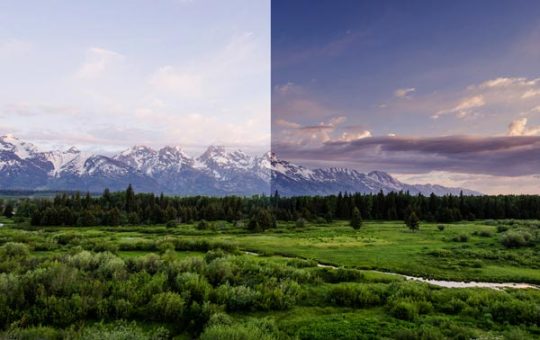
If you’ve ever had to take a photograph on a bright sunny day, chances are pretty high that you would have lost detail, possibly in the shadows or in the highlights, perhaps even both. This is not an exposure problem on your part, it’s more likely a limitation of the dynamic range of your camera – almost all cameras will come up against this problem at some time.
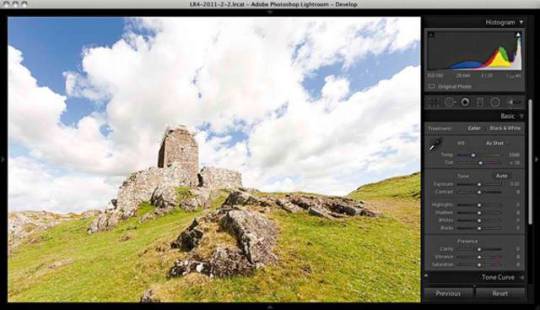
Notice the sky is lacking in detail. It is over exposed – outside of the range of the camera. There are actually two dynamic ranges you need to think about. One is the dynamic range of the subject, the second is the dynamic range of your camera. The dynamic range of the subject is a measure of the range of light intensities from the shadows to the highlights. In low light conditions the dynamic range (that is the difference between the darkest and the latest part of the subject) is quite small. On a bright sunny day that range is much higher and is often outside the range of the camera. Different cameras and different sensors will have bigger or smaller dynamic ranges. As long as the dynamic range of the subject doesn’t exceed the dynamic range of your camera you will be able to get a perfectly exposed photograph.
If the subject dynamic range is bigger than the cameras dynamic range and one part of your subject will be either under or over exposed. You can easily tell if the subject’s dynamic range exceeds that of your camera by using the histogram on your rear screen.
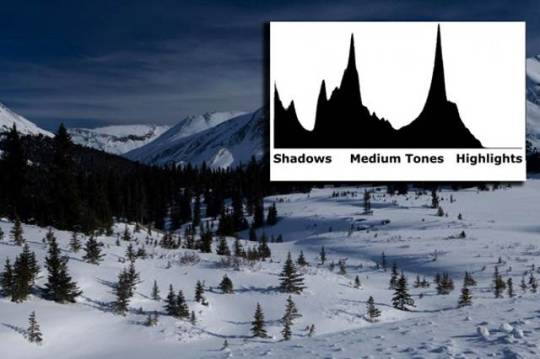
The histogram shows the range of subject brightness starting with black on the left going to white on the right. The width of the histogram chart represents the dynamic range of your camera sensor.
If the histogram fits inside of the histogram display area then the dynamic range of the subject is inside that of your camera and everything is good. If the histogram is clipped at either end then the subject range is too wide. Try changing your camera exposure and watch the histogram move left or right and see if you can fit the histogram inside of the display.
On the histogram shown you can see you can see the shadow area is outside of the sensor’s ability to register. The signal is “clipped” with no details being recorded. The left side of the histogram is crammed up tight against the edge, showing lack of detail.
On the right of the histogram there is still room – the photographer could open up the iris (or use a slower shutter speed) and get more detail in the shadow area without sacrificing detail in the highlights.
Be careful not to over expose the highlights!
A blown out highlight looks terrible whereas a shadow lacking detail is acceptable.
If the subject’s dynamic range is too big and will not fit in histogram and then you need to choose where you will lose information. Ninety-nine percent of the time a photograph that is exposed so the highlights have full detail and the shadows just go black with no detail is a much better option and gives a much more pleasing photograph than one where there is full detail in the shadow but where the highlights are completely burned out.
The almost golden rule is “expose for the highlights,” that is, expose so the highlights are not clipped. Shadows by definition are dark and it is hard to see detail there, so, if you have to loose a portion of the dynamic range it is almost always preferable to loose in the shadows.
There are ways to lift shadows – consider using a fill in flash or a reflector to lighten up those areas if they are close enough to the flashgun that it would have an effect.
Another option – and always a good piece of equipment to have in your camera kit – is to use a graduated neutral density (ND) filter.
BIT DEPTH
Bit depth is one of the most fundamental and important parameters you're likely to come across in photography and videography. This great video will give you a quick introduction to what bit depth is and why it matters to your work.
Coming to you from ZY Productions, this quick and informative video will teach you about bit depth. Bit depth is essentially how much information your camera can store in each color channel for each pixel. For example, a camera with 8-bit color depth can store a string of eight 0s and 1s in each color channel for each pixel. Since there are two possibilities (0 or 1) in each slot and eight slots overall per channel, that equates to 2^8=256 values per channel. Since there are three overall channels, this equates to (2^8)^3=16,777,216 total colors. Altogether, higher bit depths are better, as they create finer gradations, and this results in smoother transitions between tones. As the video notes, the standard JPEG is 8-bit, whereas raw files are typically 12-bit or 14-bit files. This is by far one of the best reasons to shoot in raw; the massive gain in information you get from those extra bits creates much more post-processing latitude. Check out the video above for more.
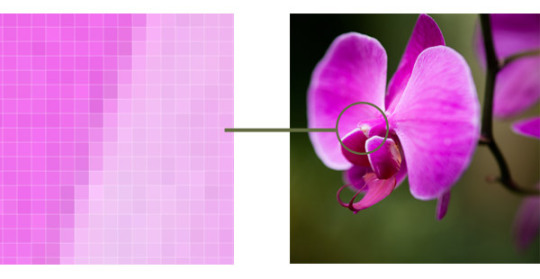
there is some lin with video about bit depth:
https://youtu.be/Z-0hszXbYD0
DIGITAL NOISE
Digital camera image noise
"Image noise" is the digital equivalent of film grain for analogue cameras. Alternatively, one can think of it as analogous to the subtle background hiss you may hear from your audio system at full volume. For digital images, this noise appears as random speckles on an otherwise smooth surface and can significantly degrade image quality. Although noise often detracts from an image, it is sometimes desirable since it can add an old-fashioned, grainy look which is reminiscent of early film. Some noise can also increase the apparent sharpness of an image. Noise increases with the sensitivity setting in the camera, length of the exposure, temperature, and even varies amongst different camera models.
CONCEPT: SIGNAL TO NOISE RATIO
Some degree of noise is always present in any electronic device that transmits or receives a "signal." For televisions this signal is the broadcast data transmitted over cable or received at the antenna; for digital cameras, the signal is the light which hits the camera sensor. Even though noise is unavoidable, it can become so small relative to the signal that it appears to be nonexistent. The signal to noise ratio (SNR) is a useful and universal way of comparing the relative amounts of signal and noise for any electronic system; high ratios will have very little visible noise whereas the opposite is true for low ratios. The sequence of images below show a camera producing a very noisy picture of the word "signal" against a smooth background. The resulting image is shown along with an enlarged 3-D representation depicting the signal above the background noise.
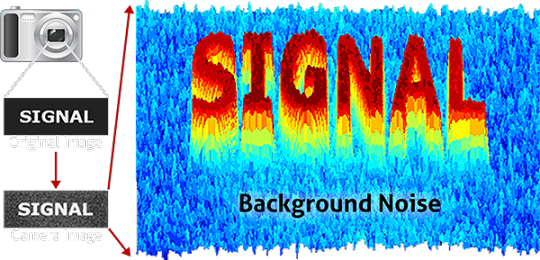
The image above has a sufficiently high SNR to clearly separate the image information from background noise. A low SNR would produce an image where the "signal" and noise are more comparable and thus harder to discern from one another.

ERMINOLOGY: ISO SPEED
A camera's "ISO setting" or "ISO speed" is a standard which describes its absolute sensitivity to light. ISO settings are usually listed as factors of 2, such as ISO 50, ISO 100 and ISO 200 and can have a wide range of values. Higher numbers represent greater sensitivity and the ratio of two ISO numbers represents their relative sensitivity, meaning a photo at ISO 200 will take half as long to reach the same level of exposure as one taken at ISO 100 (all other settings being equal). ISO speed is analogous to ASA speed for different films, however a single digital camera can capture images at several different ISO speeds. This is accomplished by amplifying the image signal in the camera, however this also amplifies noise and so higher ISO speeds will produce progressively more noise.
TYPES OF NOISE
Digital cameras produce three common types of noise: random noise, "fixed pattern" noise, and banding noise. The three qualitative examples below show pronounced and isolating cases for each type of noise against an ordinarily smooth grey background.
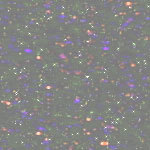
Fixed Pattern Noise Long Exposure Low ISO Speed
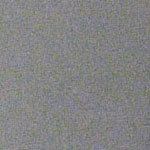
Random Noise Short Exposure High ISO Speed

Banding Noise Susceptible Camera Brightened Shadows
2 notes
·
View notes
Text
Price: [price_with_discount] (as of [price_update_date] - Details) [ad_1] Perfect for the photographic enthusiast, the Panasonic LUMIX Digital Camera DMC-LX10K brings the legendary optical performance of a 3X (24-72mm) LEICA DC VARIO-SUMMILUX lens with amazingly stable O.I.S. (Optical Image Stabilizer) to a highly portable point-and-shoot travel camera. With a powerful, 1-inch 20.1-megapixel MOS sensor, the LEICA DC VARIO-SUMMILUX camera lens features a super bright F1.4-2.8 aperture range that is optically stabilized with Panasonic’s POWER O.I.S. technology to add striking depth of field dimension to your photographs even in low-light conditions. The high-resolution power of 4K video technology captures up to 4X the resolution (3840 x 2160) of standard Full HD, enabling you to create printable photos with 4K photo’s blistering 30 frames per second burst feature. Post Focus and Focus Stacking provide for additional creative freedom by allowing you to change depth of field or focus points after you take the picture. The LUMIX LX10 also features the hands-on manual feel of a lens-mounted control ring and thumbwheel, and rear touch-enabled 3-inch LCD display that tilts upward 180 degrees for easy selfie photos. Convenient travel-ready technologies like USB charging and Wi-Fi connectivity to your mobile device make the LUMIX DMC-ZS100K a digital camera that everyone can enjoy. [ad_2]
0 notes
Text
Panasonic Lumix DMC-LX10 4K Digital Level and Shoot Digicam, 20.1 Megapixel 1-inch Sensor
Panasonic Lumix DMC-LX10 4K Digital Level and Shoot Digicam, 20.1 Megapixel 1-inch Sensor
Worth: (as of – Particulars) Included within the field: Panasonic Lumix DMC-LX10 Digital Digicam (DMC-LX10K) Rechargeable Battery Pack Battery Charger Digicam Strap Lowepro Format 120 Digicam Bag, Black Lexar Skilled 633x 64GB U3 SDXC Reminiscence Card Fotopro UFO 2 Versatile Tripod with Smartphone and GoPro Adapter, Black Corel PC Software program Equipment – PaintShop Professional…

View On WordPress
0 notes
Photo

Used Panasonic Lumix DMC-LX10 Digital Camera (EX) (625388024)

Used Panasonic Lumix DMC-LX10 Digital Camera
The Panasonic Lumix DMC-LX10 is a compact powerhouse that offers outstanding performance by utilizing a 20.1MP High-Sensitiv..
Price: $324.99
https://ift.tt/oiudvR5 March 07, 2022 at 04:47AM
0 notes
Text


Reflections & Shadows... at the edge of Willow Lake, on a morning walk with my dog Lucy.
20 notes
·
View notes
Text
MegaGear Leather Camera Case with Strap compatible with Panasonic Lumix DC-ZS80, DC-ZS70, DMC-LX10, DMC-ZS60, DMC-ZS100
MegaGear Leather Camera Case with Strap compatible with Panasonic Lumix DC-ZS80, DC-ZS70, DMC-LX10, DMC-ZS60, DMC-ZS100
Price: (as of – Details) Product Description MEGAGEAR – LUXURIOUS & PROTECTIVE LEATHER CASE FOR Panasonic Lumix DC-ZS80, DC-ZS70 / Lumix DC-TZ90, DMC-LX10K, DMC-ZS60, DMC-ZS100, DMC-TZ80, TZ100 MegaGear Protective Leather Camera Case, Bag for Panasonic Lumix DC-ZS80, DC-ZS70 / Lumix DC-TZ90, DMC-LX10K, DMC-ZS60, DMC-ZS100, DMC-TZ80, TZ100 Be prepared for photo opportunities with the MegaGear…

View On WordPress
0 notes
Photo

*!@# Panasonic LUMIX DMC-LX10 Digital Camera 20MP with LEICA 24-72mm f1.4-2.8 Lens https://ebay.to/3jNZRgl
0 notes
Photo



https://www.pepper.ru/deals/kompaktnaya-kamera-panasonic-lumix-dmc-lx10-106540 Компактная камера Panasonic Lumix DMC-LX10 (из-за рубежа) 31 051₽ - OZON Компакт-камера с однодюймовым сенсором и самым светосильным объективом 24-72mmF1.4 в этом классе от компании Panasonic. В камере установлен трехкратный зум объектив с эквивалентным фокусным расстоянием 24-72 мм. Максимальная диафрагма в широкоугольном положении — f/1.4, в телеположении — f/2.8. Фокусировка может производится на минимальном расстоянии в 3 сантиметра (в широкоугольном положении). В объективе используется 6 асферических элементов, элементы из ED и UHR стекла. Оптическая схема состоит из 11 линз в 9 группах. Для управления диафрагмой предусмотрено кольцо вокруг объектива. Характеристики камеры: Сенсор 1" с разрешением 20.1 МП Чувствительность ISO 125 – 12800 (расширяется до ISO 80 – 25600) Объектив Leica DC Vario-Summilux 8.8 – 26.4 mm f/1.4 – 2.8. В 35-мм экв: 24 – 72 mm (3:2) Минимальная дистанция фокусировки 30 см в обычном режиме, 3 см — в макро Выдержка: от 1/4000 до 60 сек. (1/16000 с электронным затвором) Серийная съемка: 10 к/с, 50 к/с Стабилизация: 5-осевой гибридный стабилизатор Экран: 3" наклонный сенсорный ЖК-экран с разрешением 1.04 млн. точек, с поворотом на 180 градусов вверх Видеозапись 4K 24p/25p/30p, FullHD 50p/60p/100p/120p 4K Photo 30 к/с до 15 минут Встроенный Wi-Fi Зарядка через USB Карты памяти: SD, SDHC, SDXC с поддержкой UHS-I Аккумуляторная батарея: 680 mAh, 7.2 V Габариты: 105.5 x 60 x 42 мм Вес: 280 г. (без батареи и карты памяти), 310 г. (с батареей и картой памяти) OZONAC1N39 ✅ 300р в приложении #озон #ozonru #промокод
0 notes
Text

Panasonic Lumix DMC LX10 Digital Camera http://rover.ebay.com/rover/1/711-53200-19255-0/1?ff3=2&toolid=10039&campid=5337982659&item=224069111525&vectorid=229466&lgeo=1&utm_source=dlvr.it&utm_medium=tumblr
0 notes
Photo

Panasonic Lumix DMC-LX10 20.1MP Digital Camera + 32GB + Flash + Tripod Bundle https://ift.tt/2VLi9oP
0 notes
Photo

Used Panasonic DMC-LX100 Lumix Digital Camera (EX) (625341215)

Used Panasonic Lumix DMC-LX10 Digital Camera
The Panasonic LUMIX DMC-LX100 Digital Camera is an advanced Four Thirds format point-and-shoot with manual controls designed..
Price: $349.99
https://ift.tt/38U2UjH September 09, 2021 at 10:26AM
0 notes
Photo

Panasonic Lumix DMC-LX10 Digital Camera (DMC-LX10K) Bundle +64GB Memory Card D V $538.66
http://rover.ebay.com/rover/1/711-53200-19255-0/1?ff3=2&toolid=10039&campid=5337702801&item=202944042530&vectorid=229466 Panasonic Lumix DMC-LX10 Digital Camera (DMC-LX10K) Bundle +64GB Memory …
0 notes